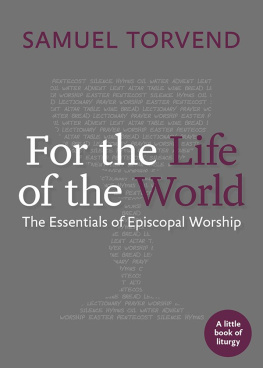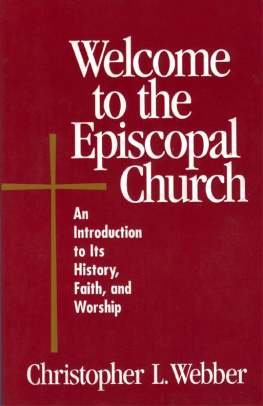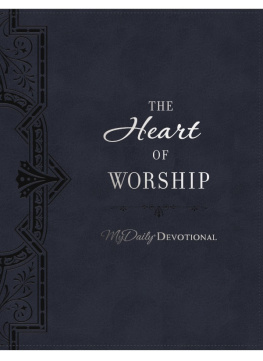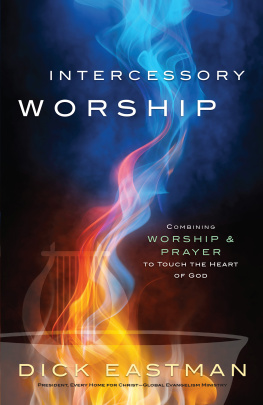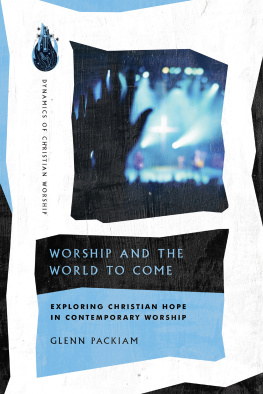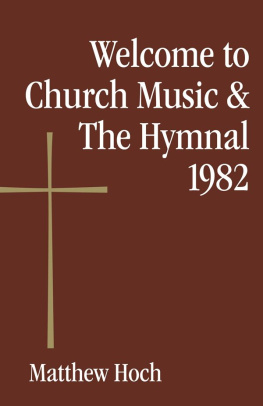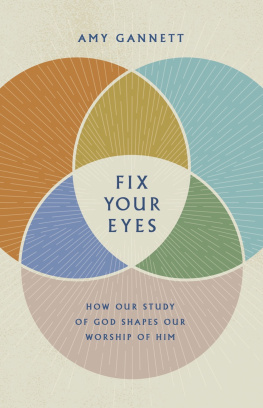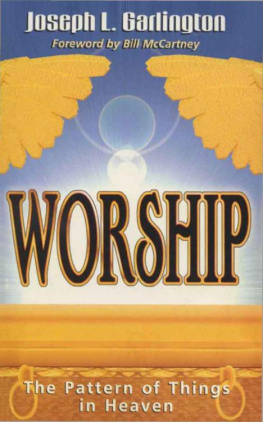All rights reserved. No part of this book may be reproduced, stored in a retrieval system, or transmitted in any form or by any means, electronic or mechanical, including photocopying, recording, or otherwise, without the written permission of the publisher.
Unless otherwise noted, the Scripture quotations contained herein are from the New Revised Standard Version Bible, copyright 1989 by the Division of Christian Education of the National Council of Churches of Christ in the United States of America. Used by permission. All rights reserved worldwide.
There is a risk in suggesting that something may be essential in life or in faith. Inevitably, someone will say, You forgot this or You overlooked that. What might be essential for this persons life or this communitys gathering may not be so for others. And yet we know some things are essential for life: air to breathe, food and drink to nourish, shelter and clothing to protect from the elements, rest as well as movement, companionship in some form, and care for the well-being of bodies and souls. From time immemorial, human beings have sought the essentials that enable life to flourish. If they werent essential, would we need the enormous energy expended in responding to the contemporary reality of pollution, food insecurity, water privatization, child poverty, homelessness, and inadequate healthcare?
Is it possible to say the same regarding worshipthat there are essentials? Since the nineteenth century, Episcopalians and Anglicans have sought to find what we have in common with other Christians rather than focus on all that separated us from each other in the eighteenth century (Methodism), in the sixteenth century (Catholicism and various forms of Protestantism), in the eleventh century (Eastern Orthodoxy), and in the fifth century (Oriental Orthodoxy). While centuries of conflict kept Christians of different communions from speaking with each other, the past century has revealed a shared pattern of worship beneath the distinctive elements and, within that pattern, common elements. The Episcopal Book of Occasional Services 2018 points to these common elements when it states, It is important to maintain the centrality of the essential symbols for the assembly: font, word, and table ( Book of Occasional Services 18). Note that the directive does not say optional, occasional, or arbitrary symbols but rather essential symbols.
We would be remiss, however, if we left it at that, and gave the impression that a church directive should be accepted at face value without question, a kind of instructional dogmatism. Rather, these four elementsthe assembly of those gathered, the word, the font, and the tablespeak more of actions than unmoving things that one might find in a churchy museum. The people gather and become an assembly; the Word of God is proclaimed by members of the assembly with responses from the gathered congregation followed by an interpretation of this word leading to prayer for the church and the world; at times there is a washing in water and the Name of God with prayer, anointing, and welcome by the assembly; thanksgiving over bread and wine at the eucharistic table is offered by the presider with the assembly singing, acclaiming, and confirming the thanksgiving; there is then eating and drinking that leads to a dismissal into the world. Assembly, word, font, and table do not describe immovable, sacred objects but rather the central and life-giving sources of a living organism, an ensemble of actions with words that bestow and nourish Christian identity and set forth the purpose, the mission of this assembly.
The thoughtful person might ask, Why are they called essential? In a consumerist culture that demands seemingly endless options, to suggest that something may be essential may be construed as limiting choice. And yet we rightly remember the close relationship between life and liturgy: Birth in the watery womb brings us into a household; food and drink nourish life and living; a sense of belonging is made possible through gestures, movements, words, and clothing. That is, the very actions that many associate with church have their origin in the household, in the essentials needed to live. Perhaps this is why in their efforts to describe the community that emerged from the life, death, and resurrection of Jesus Christ, the writers of the New Testament use the terms household or companions on the way.
But there is more: it is through the essential symbols that we encounter the One who comes to the assembly. Early and medieval Christians grasped artistically the advent of the triune God to the people of God assembled for worship: Above and behind the altar, an image of Christ was painted or created with mosaic, a nimbus or halo of the Spirits energy surrounding Christs body, and Gods hand holding a laurel wreath of victory hovering above Christs image. What did the artists portray? The advance or advent of Christ to this assembly gathered around the proclamation of the Word of God, the water washing called baptism, and the sharing of bread and wine cup called the Eucharist. It was and it is through these essential things, these very ordinary and earthy things, that the assembly encounters the wounded and risen Christ who gathers, who speaks in our midst today, who washes seekers into his body, who gives himself away as food and drink, and who leads the assembly forth into the world.
In this little primer on the essentials of worship, we hope to describe this vibrant center of Anglican worship, with its ecumenical gifts, for the life of the world. While the North American past witnessed a church governed by the state (the Church of England) and a church frequently allied with cultural privilege (the Protestant Episcopal Church in the United States), the assumption that people will be attracted to such established institutions no longer holds, if it ever did. The assumption that spiritual seekers in an increasingly secularized society will be attracted to a church because of its musical heritage, its cherished traditions, an open welcome, or its open-mindedness no longer holdsthough all of these are much-loved marks of Anglican spirituality. Why claim that such assumptions no longer hold? They participate in a way of thinking about Christian faith and life that sounds much like this: If we build it, they will come. Or this: We expect you, the seeking soul, to come to us.
In July 2018, the General Convention of the Episcopal Church approved Resolution A068, a resolution that initiated the process of liturgical and prayer book reform. That same resolution highlighted something new: it placed worship and the reform of worship in the service of Gods mission... of loving, liberating, life-giving reconciliation and care for creation. Rather than begin with the notion that the primary purpose of worship is to get people through the door of the church, it suggested the opposite: One of the primary purposes of worship is to invite the gathered assembly to participate in the advance of God into the world . As the Eastern Orthodox Church has long said, the churchs liturgy leads to the liturgy in the world: the service and witness of the people of God in daily life.

